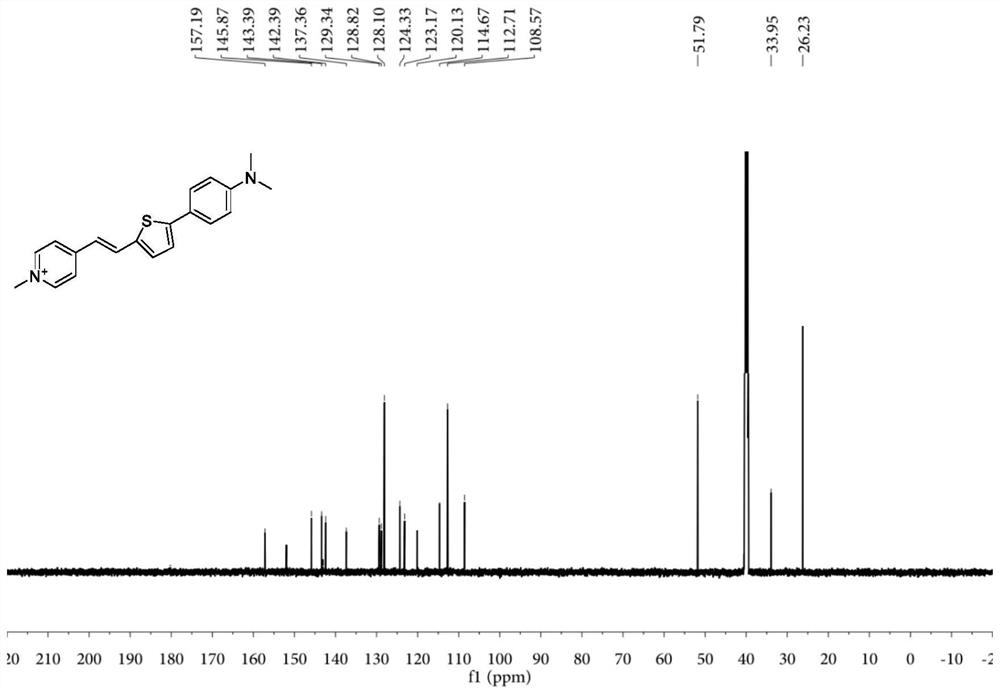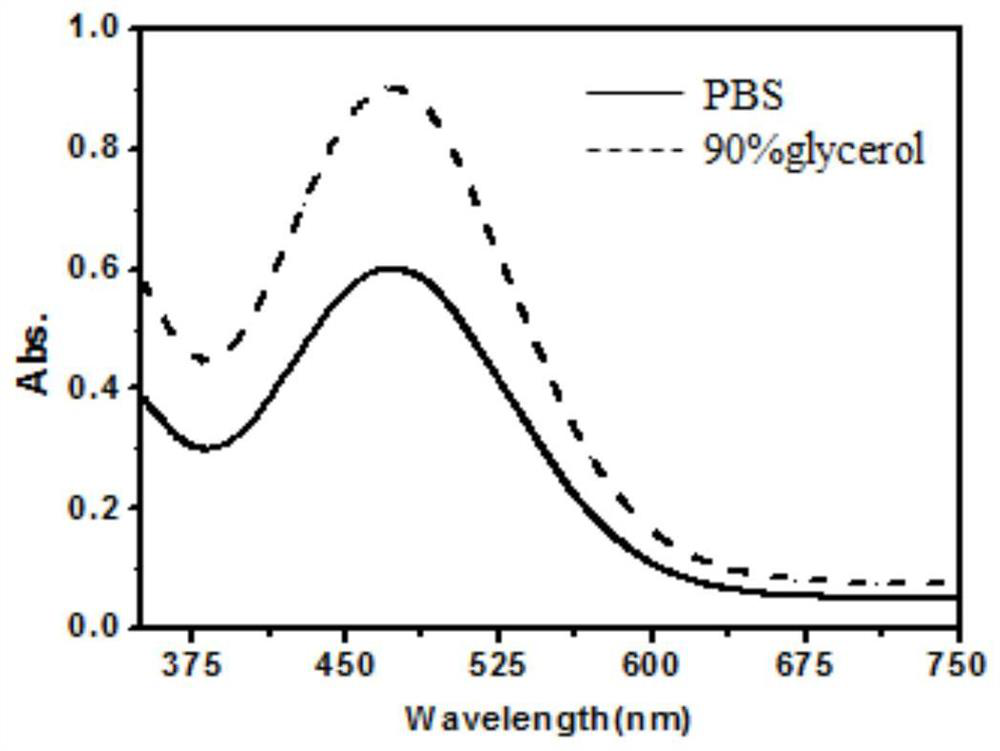Near-infrared fluorescent compound for detecting viscosity as well as preparation and application thereof
A fluorescent compound and near-infrared technology, applied in luminescent materials, organic chemistry, measuring devices, etc., can solve problems such as the inability to detect cell viscosity, and achieve the effects of small light damage, low background interference, and high viscosity sensitivity
- Summary
- Abstract
- Description
- Claims
- Application Information
AI Technical Summary
Problems solved by technology
Method used
Image
Examples
Embodiment 1
[0039]Embodiment 1: the preparation of compound (I)
[0040] Add 1mmol of compound (II), 1.2mmol of compound (III) and 0.2mmol of piperidine into a sufficient amount of ethanol solvent (5ml), stir at 85°C for 12h; concentrate the reactant under reduced pressure at 45°C to 500uL, oily liquid, Purified by silica column chromatography, eluted with dichloromethane / methanol (v / v, 1:10), collected the eluent, and dried to obtain compound (I) (53% yield), which H NMR spectrum see figure 1 , C NMR see figure 2 . 1 H NMR (500MHz, CDCl 3 ).
[0041]
Embodiment 2
[0042] Embodiment 2: the fluorescence absorption spectrum figure (excitation wavelength is 480nm, emission wavelength is 670nm) of compound (I) (5 μ M) in PBS and the glycerol that volume fraction is 90%
[0043] Accurately weigh a certain amount of compound (I) prepared in Example 1, prepare a probe mother solution with a concentration of 0.1mM with dimethyl sulfoxide, pipette 2 μL and add it to 0.398mL glycerol / PBS buffer solution (glycerol / PBS , v:v, 1:9), and then added to a 96-well plate, and then measure the fluorescence emission spectrum of compound (I).
[0044] Fluorescence spectrum see image 3 , the calculated Stokes shift is 190nm. Experimental result shows, when excited with 480nm wavelength, in PBS buffer solution, the absorption of compound (I) at 480nm place is weaker; When buffer solution viscosity is higher, the absorption of compound (I) at 480nm place is stronger, illustrates The probe is sensitive to viscosity.
Embodiment 3
[0045] Embodiment 3: compound (I), in DMSO / PBS buffer solution (v / v=1 / 99), under the condition of pH=7.4, the fluorescence intensity of probe changes with viscosity
[0046] Accurately weigh a certain amount of compound (I) prepared in Example 1, prepare a probe mother solution with a concentration of 1 mM with dimethyl sulfoxide, and pipette 2 μL of PBS buffer solution that is added to 0.398 mL of different viscosity values (final viscosity Values of 100cp, 200cp, 300cp, 400cp, 500cp, 600cp, 700cp, 800cp, 950cp) were added to a 96-well plate at 37°C, then the fluorescence spectrum of compound (I) was measured, and a correlation linear curve was made.
[0047] Fluorescence spectrum see Figure 4 and Figure 5 . The data showed that the fluorescence intensity of compound (I) increased significantly with the increase of buffer viscosity. When the viscosity value is 950cp, the fluorescence intensity is increased by nearly 130 times, and it has a good linear relationship (R...
PUM
| Property | Measurement | Unit |
|---|---|---|
| fluorescence | aaaaa | aaaaa |
| fluorescence | aaaaa | aaaaa |
| fluorescence | aaaaa | aaaaa |
Abstract
Description
Claims
Application Information
 Login to View More
Login to View More - R&D
- Intellectual Property
- Life Sciences
- Materials
- Tech Scout
- Unparalleled Data Quality
- Higher Quality Content
- 60% Fewer Hallucinations
Browse by: Latest US Patents, China's latest patents, Technical Efficacy Thesaurus, Application Domain, Technology Topic, Popular Technical Reports.
© 2025 PatSnap. All rights reserved.Legal|Privacy policy|Modern Slavery Act Transparency Statement|Sitemap|About US| Contact US: help@patsnap.com



